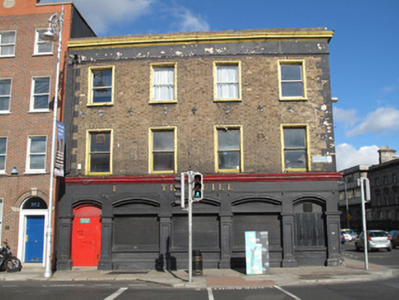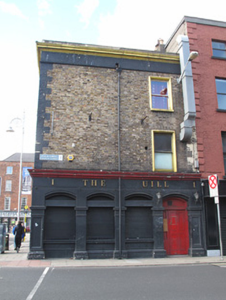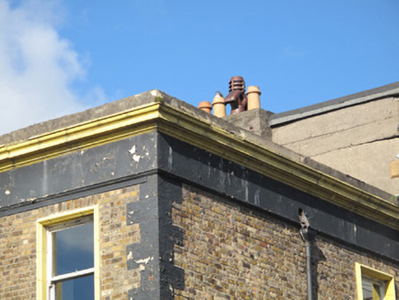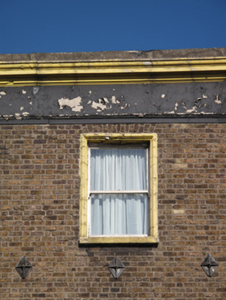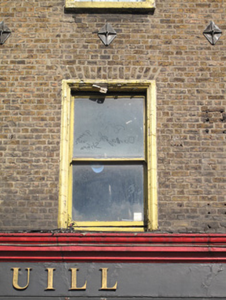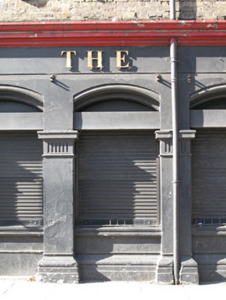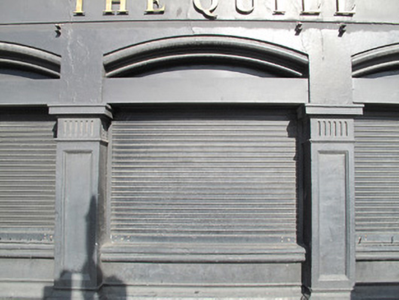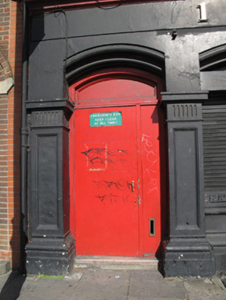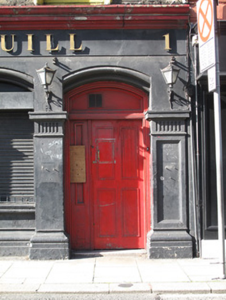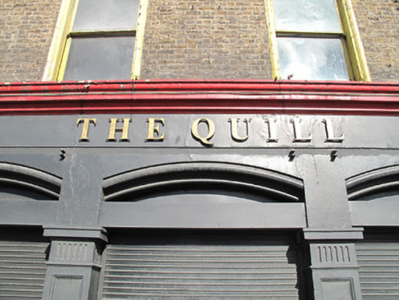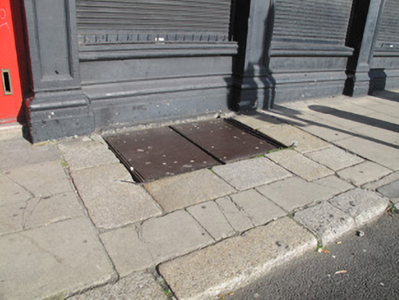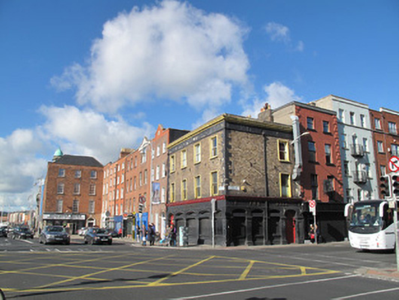Survey Data
Reg No
50070266
Rating
Regional
Categories of Special Interest
Architectural, Artistic, Social
Original Use
House
In Use As
Public house
Date
1790 - 1810
Coordinates
314881, 234219
Date Recorded
10/10/2012
Date Updated
--/--/--
Description
Corner-sited attached three-storey former house, built c.1800, having four-bay front (south) elevation and two-bay east elevation, pubfront inserted to both elevations in 1887. Now in use as public house. Double-span hipped roofs with rendered and red brick chimneystacks and clay chimneypots, rendered parapet wall having rendered coping and carved cornice. Cast-iron rainwater goods. Yellow brick laid in Flemish bond to walls, painted block-and-start imitation quoins. Square-headed window openings with moulded surrounds, painted masonry sills and one-over-one pane timber sash windows. Arcaded shopfront comprising rendered panelled piers having fluted friezes to capitals, supporting segmental-headed arches with carved archivolts over door and window openings, moulded masonry cornice over render fascia. Moulded plinth course. Shutters to window openings. Segmental-headed door opening with sheeted timber door to front elevation, blocked overlight, granite step. Timber panelled door to east elevation, panelled sidelight and tympanum, opening onto granite step. Some granite paving to footpath to front, steel doors covering basement area.
Appraisal
Construction on Arran Quay began in the late seventeenth century and was continued throughout the eighteenth century. During the latter, a range of buildings stood directly at the quayside at the east end, resulting in the recessed building line which occurs at this point. Much of the early granite paving and coal holes can be seen in front of this section of the street, providing addition historical and contextual interest. The pubfront of this building was 'rebuilt in the modern style' in 1887, and its render detailing greatly enlivens the façade, providing a visual and textural contrast to the yellow brick walls. Window surrounds and a moulded cornice enhance the upper floors. Prominently sited at a junction facing Church Street Bridge, its broad frontage makes a positive contribution to the streetscape.

